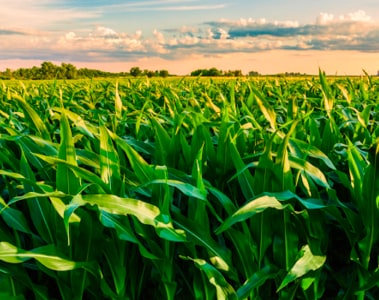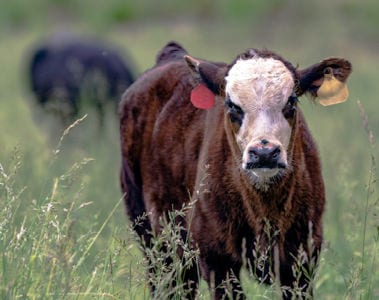
-
North America/EN
- Global
- North America
- Latin America
The 2023 corn growing season in North America has witnessed a variety of weather events including temperature and precipitation extremes in areas where many acres of corn are planted. Depending on where you’re located, you might have a very different outlook on the upcoming harvest because of the weather you’ve experienced. Yield and crop condition are influenced by weather conditions the plant has been subjected to and are closely monitored heading into harvest. Fungal diseases can influence crop condition as well as yields and some fungal pathogens can produce mycotoxins which affect crop quality. This article will review key factors which influence the presence of mycotoxins in corn in order to provide early insights about what contamination profiles might look like with the 2023 corn crop.
Factors related to the weather including temperature and humidity are critical in the development of fungal diseases and subsequent mycotoxin production in crops. Often, we see regional differences in mycotoxin contamination profiles because different climates support different types of molds as molds have variable temperature and moisture requirements to grow. Additionally, anything that stresses the plant, ranging from drought to excess rainfall, insect or hail damage, weed pressure, or a variety of other stressors, increases plant susceptibility to mold colonization and mycotoxin production.
Most mycotoxin-producing molds live in the soil and can survive on crop residues. Corn plants are especially at risk to the fungal pathogens which cause ear rots around silking. Mold spores can be transferred to silks via wind, splashing water, or by insects. Soilborne spores can also infect plants via uptake by the roots. Damage or lesions from insects, wildlife, hail, wind, or other mechanical injury also provides a pathway for molds to colonize the plant. Table 1 is a quick guide to major ear rots found in North America.
Table 1. Guide to Ear Rots
Type of Ear Rot | Favorable Conditions | Major Associated Mycotoxin(s) | Typical Mold Color |
Aspergillus | •Hot and dry •Drought stress •Insect damage | •Aflatoxins •Ochratoxins | •Olive green-yellow |
Fusarium (“pink ear rot”) | •Moderate to warm during silking •Wet period before harvest •Most severe in warm regions + ear damage | •Fumonisins | •White to purple |
Gibberella (“red ear rot”) | •Widely distributed, but more severe in cool and humid areas •Delayed harvest increases risk and severity of disease | •Trichothecenes (e.g., Deoxynivalenol/”vomitoxin”) •Zearalenone | •White to pinkish-red |
Penicillium | •Wet, humid conditions after grain-fill •Damaged ears | •Ochratoxins | •Bluish-green to bluish-gray |
Foliar diseases also play a role in crop health and some key leaf diseases in North America caused by fungi include Gray Leaf Spot, Northern Corn Leaf Blight, Common Rust, Anthracnose, and Tar Spot. Although these diseases are not caused by mycotoxin-producing molds, such foliar diseases stress the plant, can be detrimental to grain yields, and leave the plant at risk for secondary disease by molds that can produce mycotoxins. Additionally, several of the troublesome ear rot causing fungi can also lead to stalk rot. Depending on the timing of disease, mycotoxins may be present in various parts of the corn plant beyond the ear which is significant to those harvesting corn silage. Stalk and root rots are important as they are an added stress for the plant and can lead other issues such as premature death or lodging. Scouting fields can help identify disease pressure and guide timely and appropriate management tactics that can boost plant health.
At this point it is difficult to accurately predict what mycotoxin contamination patterns will look like for most acres of corn planted in the USA, but Table 2 highlights potential situations that may have occurred during the growing season and circumstances to keep in mind while heading into harvest that can increase the risk for fungal disease and subsequent mycotoxin production. It’s important to remember that the risk for mycotoxins to accumulate continues for the duration of the plant lifecycle and into grain storage through the time of feeding out.
Table 2. Potential crop year situations and the associated risk for mycotoxins.
Situation | Associated Risks | Potential Mycotoxins |
Late planting | Increased chance of heat stress during silking | Aflatoxins, Fumonisins |
Potential greater insect pressure during silking | All | |
Late harvest – crop exposed to inclement weather conditions later into fall | Trichothecenes, Zearalenone | |
Higher than ideal moisture content at harvest | Aflatoxins, Ochratoxins | |
Planting completed within short window | Short window for optimal harvest conditions, crop may stand in field beyond maturity | Trichothecenes, Zearalenone |
Foliar diseases | Secondary infection with mycotoxin-producing mold | All |
Insect, wildlife, hail, wind, etc. damage | Secondary infection with mycotoxin-producing mold | All |
Hot, dry weather including drought | Plant stress increasing susceptibility to disease | Aflatoxins, Fumonisins |
Excess moisture, moderate temperatures | Plant stress increasing susceptibility to disease | Trichothecenes, Zearalenone |
High fuel costs | Inadequate drying practices | Aflatoxins, Ochratoxins |
As crops start to come out of the field, remember that visual inspection alone is not a reliable indicator of mycotoxins, so screening your grain is an important step in understanding the level and type of mycotoxin contamination present in your feed. Rapid test kits are available that can be used on-site to quickly help inform your operation of the mycotoxin pressures in your feed ingredients. Submitting samples for analysis to a mycotoxin service lab is another option to determine mycotoxin presence. Considering the interesting growing conditions already realized in many parts of North America this year, there is strong potential for mycotoxins to be present in 2023 crop. If you would like to learn more about the mycotoxin services dsm-firmenich offers and how we can support testing and addressing risk in your operation, please contact your dsm-firmenich account manager. Check back next month for more insights into 2023 harvest!
18 September 2023


16 Sep 2024

We detected that you are visitng this page from United States. Therefore we are redirecting you to the localized version.